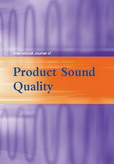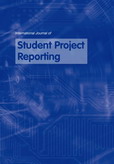Explore our journals
Browse journals by subject
Research picks
- Tourist footprints on the nature reserve
A study in the International Journal of Environment and Pollution, has looked at a fast, efficient method of assessing environmental pollution across nature reserves and so could offer a clearer view of the impact of tourism on such putatively fragile ecosystems. Qiong Da, Fang Zhou, and Nima Ciren of the Tibet Agricultural and Animal Husbandry University in Nyingchi, China, used factor analysis, a statistical technique to simplify complex data, to assess the various forms of pollution that might be present on a nature reserve including water and soil contamination, and air pollution. Their approach can highlight core environmental risks in less than half an hour.
Nature reserves draw millions of visitors annually, benefiting local economies, but tourist activity can put a strain on the environment. The researchers point out that current pollution assessment approaches can take days if not weeks and are data-heavy. Ultimately, these leave reserve management and policymakers in a quandary as to how to respond effectively to environmental issues as they arise.
The new approach uses an environmental pollution framework tailored for tourist destinations within reserves, making it possible to condense diverse indicators into the common factors that represent the most important pollution threats. The team suggests that their approach offers a more focused and so manageable dataset that might allow conservationists to act on immediate risks essentially in real-time.
The approach is adaptable and could be useful to the broader conservation effort. The framework offered by the researchers could be used in ecological assessment across other areas, not just tourist traps within nature reserves. It might thus allow timely and useful insights to be gleaned from other kinds of conservation areas that are also facing pressures from human activities. The approach could thus support resilience and long-term sustainability of conservation areas beyond the tourist hotspots.
Da, Q., Zhou, F. and Ciren, N. (2024) 'An environmental pollution assessment method for tourist attractions in nature reserves based on factor analysis', Int. J. Environment and Pollution, Vol. 74, Nos. 1/2/3/4, pp.1–15.
DOI: 10.1504/IJEP.2024.142543 - A MOF in the frame for cleaner water
The future of MOFs, metal-organic framework materials, looks bright. A review in the International Journal of Environment and Waste Management has looked at how a specific class of these sponge-like materials might find increasing use in removing dye contaminants from industrial wastewater.
Irvan Dahlan and Hamidi Abdul Aziz of the Universiti Sains Malaysia in Pulau Pinang, Malaysia, and Yung-Tse Hung of Cleveland State University in Cleveland, Ohio, USA, have focused on MOF-5 materials. These substances, constructed from a metal such as zinc to which organic molecules are bonds to build vast crystalline structures are highly porous and so have a large internal surface area compared to their overall volume, which means they can soak up, or adsorb (sic) small molecules, such as organic dye pollutants present in industrial wastewater.
The textile, pharmaceutical, and paper industries all generate vast quantities of wastewater contaminated with synthetic dyes. This represents an enormous burden on the environment and a serious risk to ecosystems where this contaminated wastewater might end up.
Organic dyes can be stubborn pollutants, as they are often chemically stable and difficult to break down. They can resist traditional wastewater treatments. Once present in natural waters, they block sunlight and so hamper photosynthesis in aquatic plants, and can thus disturb entire ecosystems. Moreover, some dyes are toxic, carcinogenic, or have mutagenic properties, and so represent a risk to marine life as well as throwing up health concerns for communities dependent on the water sources that are contaminated.
Conventional dye-removal methods, such as chemical treatment, filtration, and biological processes, are often too costly and complex to be commercially viable and commonly inefficient at handling large volumes of wastewater regardless of cost. MOFs, on the other hand, have emerged as a promising alternative due to their unique structures. Importantly, simple changes to the organic molecules from which they are constructed, and the metals used to lock these molecules together into a three-dimensional structure can be made relatively easily so that they can be given different pore sizes and adsorption characteristics.
The team's review shows that much work remains to be done with MOF-5 materials so that they bugger pore sizes can be developed for the larger dye molecules. There is also a need to improve the durability and reusability of these materials to make them suitable for industrial remediation use. Optimisation of their physical and chemical characteristics is now possible, but there is also a need to find ways to scale up their manufacture economically.
Dahlan, I., Aziz, H.A. and Hung, Y-T. (2024) 'Recent development of metal-organic framework 5 adsorbents for organic dye removal from aqueous solution', Int. J. Environment and Waste Management, Vol. 35, No. 3, pp.378–389.
DOI: 10.1504/IJEWM.2024.142506 - Classroom 2.0
One of the biggest buzzwords of recent years is metaverse. The term encompasses the notion of a virtual world that blends reality with digital environments. We have seen steps towards this destination over the last couple of decades with the development of virtual online spaces and their convergence with virtual reality hardware. A detailed review in the International Journal of Economics and Business Research, has now looked at how the development of a functional metaverse might change education and take us beyond the confines of the traditional classrooms.
Shorouq F. Eletter, Ghaleb A. Elrefae, Amer Qasim, and Tahira Yasmin of Al Ain University, United Arab Emirates suggest that the metaverse holds the promise of immersive, interactive, and customized learning experiences. They explain that the metaverse in the context of education would likely combine virtual reality (VR) and augmented reality (AR) so allowing students to engage in a dynamic learning experience that could essentially be set anywhere in time and space. For example, historical sites, geological locations, science laboratories, even with the world of mathematical visualisation.
Unlike conventional e-learning platforms, which are commonly based on video clips, graphics, and text-based resources, the metaverse offers a digital space where learners can engage with the content, instructors, and peers in real time, often as so-called avatars or characters immersed in this meta world. These digital classrooms offer more than just a place for lecture-based learning. They foster collaboration, engagement, and creativity, and could allow countless new possibilities for students around the world.
The team mined the Scopus database of academic publications and found that there has been a significant increase in the number of studies exploring the intersection of the metaverse and education. The researchers have identified various themes such as student engagement, global collaboration, and personalized learning as the main drivers of this growing interest. Their findings suggest that the development of the metaverse in education has the potential to break down barriers related to time, space, and socio-economic background for students and educators alike.
Eletter, S.F., Elrefae, G.A., Qasim, A. and Yasmin, T. (2024) 'Education in the Metaverse: a bibliometric exploration', Int. J. Economics and Business Research, Vol. 28, No. 6, pp.42–55.
DOI: 10.1504/IJEBR.2024.142498 - Is China charging ahead on the road to EV battery recycling?
China is perhaps in pole position when it comes to electric vehicle (EV) adoption, accounting for over 60% of worldwide sales in 2022. This dominant position makes it a critical player in addressing one of the most pressing sustainability challenges of the electric vehicle revolution: how to recycle batteries. As the world increasingly turns to EVs to combat climate change, the question of what happens to EV batteries once they reach the end of their life has never been more urgent.
Writing in the International Journal of Electric and Hybrid Vehicles, Igor Laine of LUT University in Lappeenranta, Finland, explains how the big issue is the lifecycle of lithium-ion batteries, which are used to power most of today's EVs. These batteries contain valuable metals, including cobalt, lithium, and nickel, which are finite resources and environmentally harmful if not disposed of correctly. As demand for EVs grows, so too does the pressure on these raw materials, making effective recycling both a necessity and a challenge.
According to Laine, China has become the world's largest manufacturer and consumer of EVs and is responding to the growing challenge of waste batteries with a strong recycling strategy. The country has implemented a variety of regulations aimed at holding manufacturers accountable for the entire lifecycle of their products. In addition to legal measures, China has invested heavily in the development of new technologies designed to improve the efficiency of battery recycling. Techniques for diagnosing battery health, dismantling old batteries, and extracting precious metals for re-use have been developed in recent years. China's EV future could well become sustainable in terms of batteries.
However, Laine points out that China's recycling infrastructure is not entirely mature. Recycling processes themselves could be improved in terms of efficiency. One of the major problems is that the precious metals that are at the heart of EV batteries are present with myriad other substances, all of which make extracting those metals difficult.
Extraction of the metals is the fine detail problem of battery recycling. The bigger picture sees the vast EV market in China where concerns about efficiency of battery recycling are overarched by the sheer scale of the problem, the enormous numbers involved. There is something a paradox at play with these two perspectives. On one hand, demand for EVs is growing, which means there is a constant flow of waste batteries to be harvested for the next generation of vehicles. But, the size of the market puts the potential for scalable sustainability out of reach, at least for the time being.
Laine's work suggests that the regulatory approach to EV battery recycling taken by China represents a drive in the right direction. However, to address the big problems might require an international stance, a global collective effort. International cooperation could help with research and development into recycling technology and allow standardized recycling practices to be established. The path to truly sustainable battery recycling needs innovation, regulation, and collaboration.
Laine, I. (2024) 'The evolving frontiers of sustainability and innovation: analysing China's approach to electric vehicle battery recycling', Int. J. Electric and Hybrid Vehicles, Vol. 16, No. 4, pp.342–357.
DOI: 10.1504/IJEHV.2024.142384 - The digital transformation of fintech in Jordan
A study in the International Journal of Economics and Business Research, looks at the part digital transformation has played in improving efficiency in financial systems across Jordan's public shareholding industrial companies. Information and communications technology has changed industries around the world and continues to do so.
This research, from Khalid Alomari, Ali Salah, and Rukana Alshweesh of Al-Hussein Bin Talal University, in Ma'an, Jordan, focuses on the impact of changing technology on Jordan's industrial sector. They point out that businesses are readily adopting digital tools to streamline their operations and improve how they make decisions.
The term "digital transformation" is rather broad and encompasses changes in many different areas: business models, operations, and customer interactions, as well as financial systems. Technology is important for providing accurate and timely financial data to guide day-to-day operations as well as long-term strategy. Of course, data volumes are enormous given all the technology that can soak up information. It is increasingly obvious that traditional methods of handling financial information are no longer sufficient.
The research touches on various elements of digital transformation, including customer engagement and innovation in business models and ultimately the effect on financial performance. Companies that embrace new business models incorporating digital tools and platforms can improve their internal operations and position themselves to better meet the needs of their customers. Adapting to rapidly changing digital trends is now a business necessity if organisations are to gain and sustain their competitive advantage.
Companies across Jordan are modernising in terms of fintech and this will eventually have a wider impact on the Jordanian economy itself, the research suggests. It will boost national competitiveness, create new growth opportunities, and perhaps even lead to sustainable economic development.
Alomari, K., Salah, A. and Alshweesh, R. (2024) 'The impact of digital transformation on the effectiveness of electronic financial systems', Int. J. Economics and Business Research, Vol. 28, No. 6, pp.21–41.
DOI: 10.1504/IJEBR.2024.142497 - Leaning in to improve healthcare
Research in the International Journal of Services and Operations Management has shown that the success of lean management techniques in public healthcare depends not only on the tools used to implement it, but on a fundamental shift in organisational culture. Lean management has proved itself able to reduce waste and improve efficiency across the public and private sectors. This work, by Petra Hurme and Johanna Liljeroos-Cork of Tampere University, Finland, emphasises the need to encourage long-term collaboration and improve staff well-being to make it work well in the healthcare sector.
Lean management is designed to maximise value by eliminating waste, often by streamlining processes, reducing waiting times between steps in a process, and generally improving the allocation of resources. In public healthcare settings, early applications of the lean approach have led to positive outcomes, such as enhanced service delivery, improved staff satisfaction, and even cost savings. However, within this sector, many organisations have not reaped the rewards or gained only temporary or superficial improvements.
The research looked at several healthcare and social service organisations and found that transient and superficial benefits of lean in those settings were often down to a failure to change the organisation's internal culture in order to embraces more fully the principles of lean to allow staff to engage in ongoing improvements. The team suggests that leaders need to prioritise the development of an environment that is supportive of staff where they will experience greater job satisfaction and be happier. When employees are emotionally engaged and feel included in decision-making, they are better able to drive the changes necessary to improve services, it seems.
One of the critical findings of the research is that organisations and management need to redefine how value is measured in this sector. It is not solely about operational efficiency as it might be in a factory where working more efficiently and faster towards greater profit are important. Instead, healthcare value should also be understood in terms of how well the service meets the needs and expectations of patients and service users and how well it treats its staff.
Hurme, P. and Liljeroos-Cork, J. (2024) 'Factors promoting value creation in lean management within public social and healthcare organisation', Int. J. Services and Operations Management, Vol. 49, No. 5, pp.1–21.
DOI: 10.1504/IJSOM.2024.142519 - Stirring the quiz bowl
A quiz bowl is usually an academic competition in which teams of students, typically from high schools or universities, compete by answering questions across a variety of subjects, such as history, science, literature, and current events. The format is often fast-paced, with teams buzzing in to answer questions posed by the moderator. Correct answers earn points, and the team with the most points at the end of the game wins. These tournaments can vary in size, but usually involve multiple rounds heading towards a grand final. Readers in the US and elsewhere will be familiar with College Bowl, a televised tournament and its spinoffs, such as the UK's, University Challenge.
Organizing a quiz bowl tournament is no small feat. While the players compete in fast-paced intellectual battles, behind the scenes, the real work lies in preparing and fact-checking the questions. Traditionally, this has been a painstakingly manual task, requiring hours of work to ensure that questions are arranged in a balanced, fair, and engaging manner. However, research in the International Journal of Data Analysis Techniques and Strategies has demonstrated how technology might offer a more efficient but just as effective approach to the challenge.
Kara L. Combs and Trevor J. Bihl of Wright State University, Dayton, Ohio, USA, have devised an approach to automating the organisation of quiz bowl question sets that uses optimisation techniques to reduce the burden on those responsible for preparing the competitions. The study focuses on applying mathematical models to arrange the questions in a way that meets the key criteria of any tournament: a smooth difficulty curve, thematic balance, and consistency. The team's approach proves itself a timesaver but could also improve the overall quality and consistency of any quiz bowl competition.
The researchers used the well-known Python programming language to implement their solution. Optimisation algorithms were used to arrange the questions automatically so that the final set for each round of the competitions fits the requirements of a fair, balanced, and entertaining competition. They tested their approach and were able to cut in half the time needed to organise the questions.
Combs, K.L. and Bihl, T.J. (2024) 'Question optimisation: building quiz bowl tournament sets', Int. J. Data Analysis Techniques and Strategies, Vol. 16, No. 4, pp.386–409.
DOI: 10.1504/10.1504/IJDATS.2024.142487 - Tech the talk
As the commercial landscape evolves, the integration of technology into entrepreneurship education is emerging as an important part of educating the next generation of innovative business leaders. A study in the International Journal of Technology Enhanced Learning highlights the changes taking place and points to how technological tools are reshaping not only the design and delivery of entrepreneurial knowledge but also the very skills that students need to master in order to thrive in the commercial world today.
Marsela Thanasi-Boçe and Selma Kurtishi-Kastrati of the American University of the Middle East in Egaila, Al Ahmadi, Kuwait, explain that conventionally entrepreneurship education focuses on foundational business skills such as planning and operations. However, their work suggests a more subtle approach is needed that also places emphasis on creativity and innovative thinking. Recent global events, such as the pandemic, have given this shift new urgency, catalysing the rapid adoption of digital learning platforms. With these new tools, educators can create a more engaging learning environment for their students and even mirror the complexities of real-world business challenges.
The team suggests that we need to have ongoing discussions about technology-enhanced education, and their work sheds new light on the various digital resources that might be used to support entrepreneurial training. Online learning platforms, business simulations, and other interactive tools not only engage students but also provide practical experiences that reinforce critical skills such as opportunity recognition, resource acquisition, and risk management. These skills can then be transferred to the businesses those students start when they enter the commercial world with all its uncertainties and opportunities.
The research also highlights how educators themselves need to be adept at using the new technologies. Knowledge of the curriculum is no longer sufficient, the must-have the skills to use the digital tools effectively in order to pass those skills. In other words, there is an increased pressure for ongoing professional development among educators in this field. Educational establishments, such as business schools, that invest in faculty training are in turn investing in their students and the quality of their entrepreneurship teaching.
In addition to investing in faculty education, the work hints that stronger partnerships between educational institutions and industry stakeholders should be mutually beneficial. Collaborations with businesses can provide students with opportunities to apply their theoretical knowledge in practical contexts. This can bridge the gap between classroom learning and the real-world, as well as offering networking opportunities for students and businesses.
Thanasi-Boçe, M. and Kurtishi-Kastrati, S. (2024) 'The use of technology to develop students' entrepreneurial mindset and competencies', Int. J. Technology Enhanced Learning, Vol. 16, No. 4, pp.428–446.
DOI: 10.1504/IJTEL.2024.141833 - Take note! Pitch perfect AI
A step towards improving online music education by developing an AI tool that can recognise musical notation is described in the International Journal of Wireless and Mobile Computing. The work of Ting Zhang of the Academy of Arts at Shangluo University, Shaanxi, China, addresses a longstanding problem in digital music instruction, where the ability to recognise and interpret musical notation often falls short due to platform limitations. The research shows how image processing and machine learning can help online learners, allowing them to gain a richer, more accurate grasp of musical concepts.
Zhang has developed the Pulse-Coupled Neural Network (PCNN), an artificial neural network inspired by the workings of biological neurons, which "fire" in response to certain stimuli. Traditionally, online music education has relied on simplified digital representations of musical notation, leaving students without crucial guidance when attempting to understand the intricacies of symbols and musical structures.
The PCNN model focuses on improving the digital segmentation of musical symbols within an image of a musical score, for instance. By incorporating oblique spectral correction in the system, Zhang is able to break down the image into segments for precise differentiation between symbols. This allows even distorted representations of the music score to be analysed accurately, taking into account tilted symbols or misalignments.
The use of an optimized Convolutional Neural Network (CNN) for the image-recognition tasks makes the system efficient and accurate, giving it an up to 97 percent success rate.
For students, the enhanced notation recognition system could give them feedback in real-time even when no tutor is available for discussion. This system emulates face-to-face instruction, where instant feedback is usually available. The researchers saw notable improvements in student understanding of pitch and rhythm and in their grasping foundational music theory concepts.
Zhang, T. (2024) 'Application of integrated image processing technology based on PCNN in online music symbol recognition training', Int. J. Wireless and Mobile Computing, Vol. 27, No. 4, pp.369–380.
DOI: 10.1504/IJWMC.2024.142069 - Understanding crowd sauce
The population grows daily and with it the number of tourists heading for popular spots, attractions and cities. Research in the International Journal of Security and Networks has considered one aspect of the safety of large crowds, the sheer number of people that might be present in a given location. Qinqin Dong of Xinyang University, China, points out that the biggest challenge in managing dense groups of people in real-time is determining how many people are present in a crowd.
Dong has turned to artificial intelligence to develop a new took that can track and trace the movements of people in a crowd with unprecedented accuracy. The new system, SMACSTR (Scene Monitoring Algorithm based on Crowd Scene Type Recognition), could allow us to improve safety in bustling urban spaces and popular destinations.
The behaviour of a crowd is largely unpredictable unless barriers and other measures are in place to guide their movements. At popular tourist spots, there can be many hundreds or even thousands of people moving in unexpected surges that can represent a risk to safety. Overcrowding leads to bottlenecks and if an emergency arises, hazardous crowd movements that need to be addressed and controlled quickly to avoid injury and death.
Dong's SMACSTR system can carry out crowd scene recognition, to interpret images of crowds and their behaviour. The system focuses on both static and dynamic features within the crowd and allows its operators to spot risky behaviour as it arises and so be able to implement a timely and effective response.
The static component of the system, the static density field, reveals crowd positioning and numbers, while the dynamic, the motion feature maps, indicate how the crowd is behaving. It can distinguish between calm and peaceful movements of individuals in the crowd or the emergence of erratic or panicked behaviour. By combining both characteristics of the crowd, the system can assess risks more effectively in real-time in a way that conventional systems, such as human monitoring of CCTV feeds, might not.
Dong, Q. (2024) 'Safety monitoring system for tourist scenic spots based on crowd scene type recognition', Int. J. Security and Networks, Vol. 19, No. 3, pp.128–137.
DOI: 10.1504/IJSN.2024.141780
News
Inderscience journals newly listed by Chartered Association of Business Schools
We are proud to announce that the following Inderscience journals have been added to the Chartered Association of Business Schools (CABS) Academic Journal Guide:
International Journal of Applied Decision Sciences
International Journal of Innovation and Learning
International Journal of Knowledge and Learning
International Journal of Learning and Change
International Journal of Management and Enterprise Development
International Journal of Manufacturing Technology and Management
International Journal of Process Management and Benchmarking
International Journal of Services Economics and Management
International Journal of Six Sigma and Competitive Advantage
International Journal of Technological Learning, Innovation and Development
International Journal of Tourism Policy
Inderscience's Editorial Office congratulates all editors and board members involved and thanks them for their continued efforts in raising the prestige of their journals.
Prof. Huawen Liu appointed as new Editor in Chief of International Journal of Intelligence and Sustainable Computing
Prof. Huawen Liu from Shaoxing University in China has been appointed to take over editorship of the International Journal of Intelligence and Sustainable Computing.
International Journal of Mobile Communications indexed by Scopus
The International Journal of Mobile Communications has recently been indexed by Scopus. Inderscience's Editorial Office congratulates the journal's Editor in Chief, Dr. June Wei, along with her editors and editorial board.
Prof. Christian Lauter appointed as new Editor in Chief of International Journal of Automotive Composites
Prof. Christian Lauter from the Private University of Management and Technology in Germany has been appointed to take over editorship of the International Journal of Automotive Composites.
International Journal of Applied Pattern Recognition is now an open access-only journal
We are pleased to announce that the International Journal of Applied Pattern Recognition is now an Open Access-only journal. All accepted articles submitted from 28 October 2024 onwards will be Open Access, and will require an article processing charge of US $1600.




